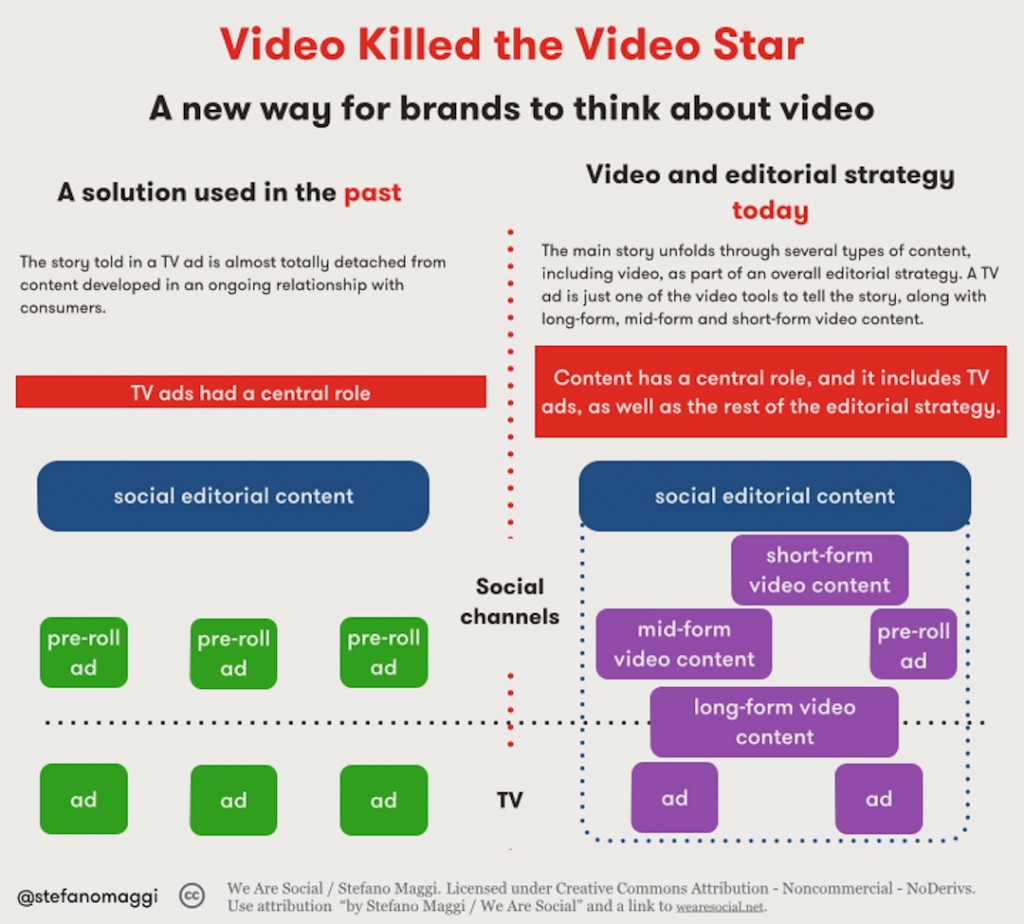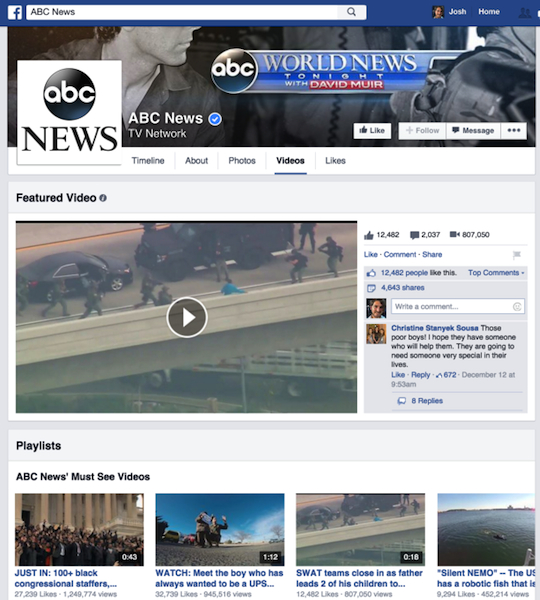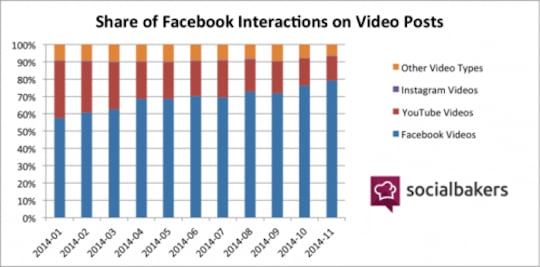Video killed the video star
Share
Online video as has opened up a world of opportunities beyond the traditional TVC, writes Stefano Maggi, managing director, We Are Social, Italy.
Until a few years ago, the way marketing thought about video revolved around a very basic concept: the TV advertisement. This approach meant that a disproportionate amount of strategic, creative and production effort went into the creation of a single piece of content. Although it was adaptable to several formats, could be watched on several channels and inspire related content, the TV spot was a single, isolated element.
Today’s reality is very different. In the past brands’ stories could be told through one, or perhaps a few, TV ads. Today, they need to be part of a conversation, evolving through many different pieces of content in different forms.
Click infographic to enlarge.
The stories brands want to communicate must adapt with the way people use the internet, and the devices they use it on. They must unfold in channels where people want to engage, without interrupting them, choosing the best times and frequencies that are relevant for people’s lives. This approach is the very foundation of a content strategy; and this includes video content. Progressive brands are embracing this approach and integrating it into their strategies.
This doesn’t mean getting rid of TV ads – quite the opposite. It does mean rethinking them, making them part of a content ecosystem that builds a story that people want to engage with.
The number of different ways to communicate with audiences is growing constantly, stimulated by the social channels themselves. For example, as well as giving an advantage to video content in the newsfeed through “autoplay”, Facebook is experimenting with video channels inside Pages, for people who are interested in video content from a brand; a concept similar to YouTube’s ‘Channels’.
It’s not only about choosing communication tools that are relevant to modern media consumption patterns. It’s about developing content for all the interest categories that a brand wants to interact with. Just look at all the YouTube ‘creators’ that have grown hugely in popularity; what do they have in common? Their focus is on a single specific type of interest, not a generic approach to video content.
This approach to editorial video strategy is essential for brands that want to develop a deeper relationship with their communities. Studying behaviors, tastes and needs of people is even more crucial now for brands. In the past, TV ads (and their publishing online, e.g. through pre-roll ads) has been totally detached from ongoing editorial plans, or just tied to it by conceptual references.
Today, winning brands are choosing to put editorial planning at the core of their content strategy, where creative is expressed through long-form, mid-form or short form video. TV spots are part of this, extending it, making it more frequent and familiar to people. But it’s just a part of a whole system. A TV ad is now just part of the editorial ecosystem: it’s not the isolated ‘video star’ it used to be.


















